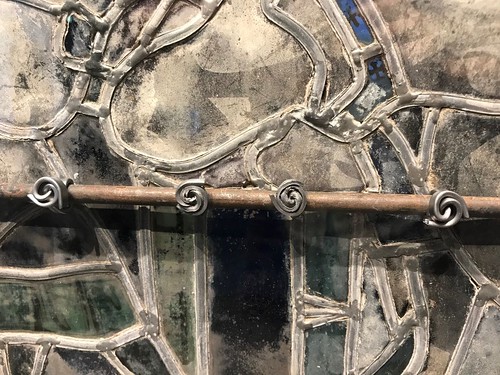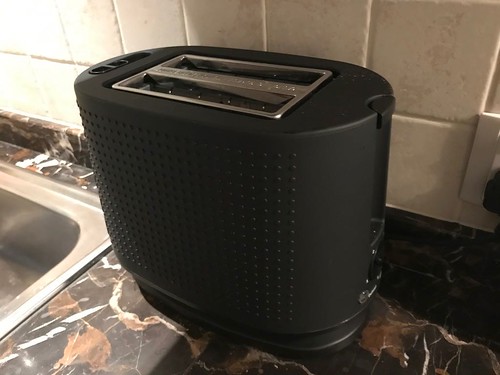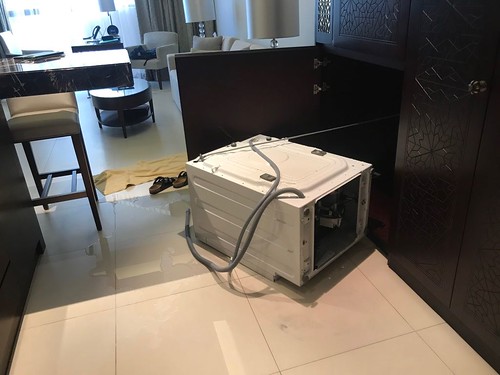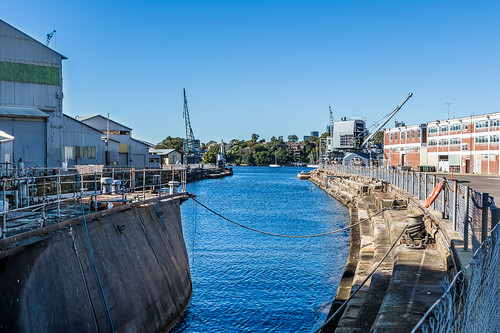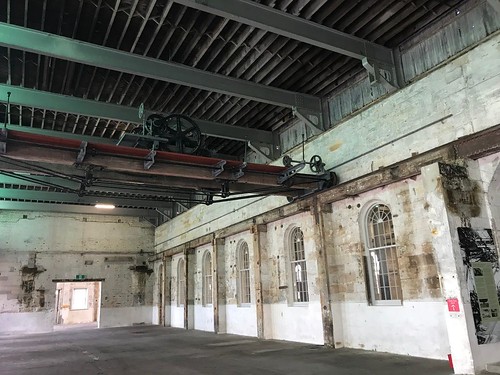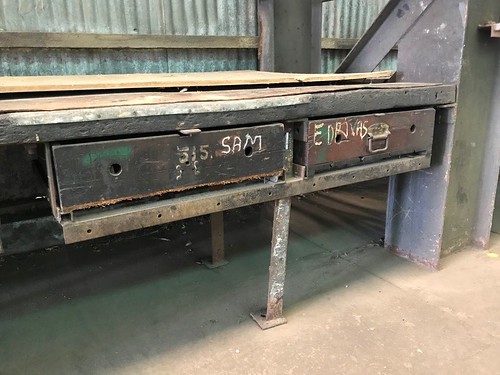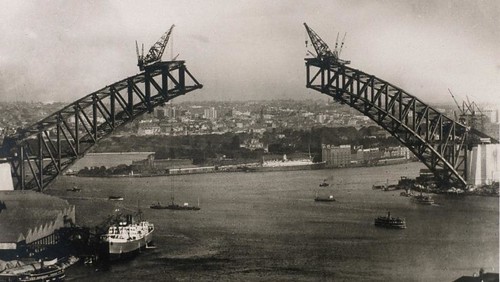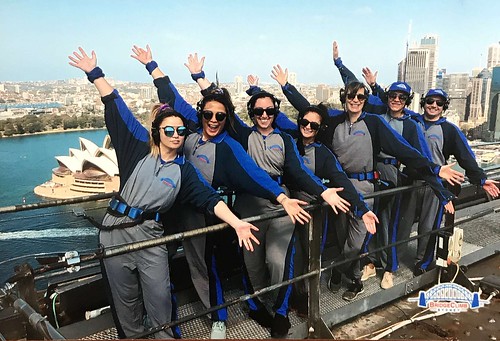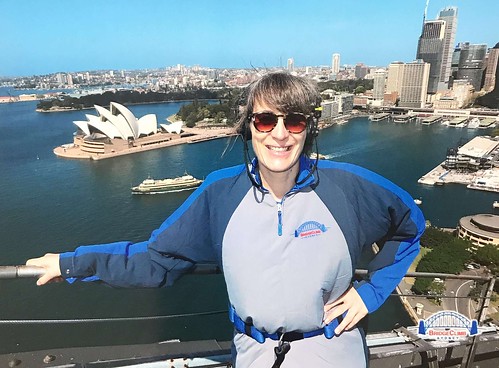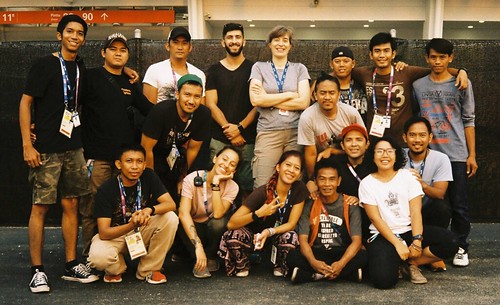In between working and battling stroppy appliances I've had a bit of time here in the Emirates to be a tourist. So at the first opportunity I found my way to the recently opened Louvre Abu Dhabi.
It’s a bit odd to find an outpost of the famed Louvre Gallery here in the desert but the two museums are actually entirely separate entities. They're linked by a $525 million dollar branding agreement that allows the Emirates institution to use the Louvre name for 30 years, with further $747 million spent for “art loans, special exhibitions and management advice. And that’s just for the name and a bit of what’s inside. The other part of this equation is the building itself, which is frankly magnificent. I went with friend and colleague Mika, who, before I stole him away to join the ceremonies circus, was an unsuspecting architecture graduate in Baku. We were both more interested in the building than its contents, but dutifully took in a large percentage of the collection.
The Louvre Abu Dhabi is billed as a museum of art and civilisations (apparently that S at the end is important), so it has galleries for temporary exhibitions of artwork, but also has a permanent collection of historical artefacts arranged in twelve interconnected rooms starting with prehistory and speeding through the entirety of human existence up to the contemporary era. The most modern of the galleries were closed for re-fit when Mika and I visited, but to tell the truth we didn’t make it past about Room 6 before bailing out for coffee and pastry. Along the way I enjoyed the Egyptian room, which has a very nice sarcophagus. And I loved that a display of stained glass showed not just the front side, meant for viewing, but also the back of the piece, revealing charming curls of lead securing the glass to the supporting frame.
We also spent a good chunk of time in a temporary exhibition of Japanese prints, and a really fun display about Japanese manga comics (which former Go See Run Eat Drink readers will recall from many many moons ago). That gallery let us colour in the walls!
And they had interactive virtual reality goggles you could wear to “enter” some traditional Japanese woodcuts. We both chose a print of a boat on water with a range of mountains in the background. It was surprisingly immersive and impressive.
So we did take in the artwork at the Louvre, but that’s really not why we went. We went for the building. Because of this:
The design of the whole building is fantastic. As you can see, the galleries are a series of 55 smaller, almost discrete buildings arranged a bit like an Arabic souk with alleyways between them. The whole arrangement is completely surrounded by the sea, and the top is capped by that magnificent dome - 180 metres in diameter (almost 600 feet) and weighing in at 7,000 tonnes. (Articles about the dome inevitably mention that the weight is almost equivalent to the weight of the Eiffel Tower.) The entire dome is supported in only four places and appears to float over the “souk" giving cover to the buildings below, which are essentially outdoors, but still sheltered. The entire arrangement is completely beguiling but it’s the dome that makes it spectacular. It’s not simply that the structure is big, it’s that the roof is composed of eight separate layers of perforations shaped like eight pointed stars in different scales. Each layer filters the light, and as the sun moves across the sky the points of light that reach through shift and change creating what’s often described as a “rain of light”.
French architect Jean Nouvel designed the building and has said that "Sometimes, in the solar noon, the brightness is so dense that it looks like light stalactites are piercing the dome.” Walking under the roof among the galleries and alleyways is exceedingly pleasant. In a climate like this where the temperature right now - in winter - often reaches 36 degrees celsius, indoor spaces are frequently overly air-conditioned. (This sometimes creates the odd effect of having your glasses steam up when going outside, an unsettling reversal for someone who grew up in Canada.) The indoor galleries of the Louvre Abu Dhabi are also air-conditioned but under the dome, while you’re still technically outside in the true climate of the region, the breeze from the sea and the shade from the roof make it temperate, and while I’d never describe it as cool it does feel right. (To be clear, it is NEVER cool in Abu Dhabi. The overnight lows right now hover around 24 degrees and in the summer it gets into the high 40s. Basically, the sun is trying to kill you.)
Naturally, Mika and I were both fascinated by the design and engineering of the roof. As we stared up at it Mika, who actually went to school for this stuff, told me about a professor he had who dated from the Soviet era. This professor was a bit hidebound and taught his students, with unwavering certainty, that any structure must have a supporting column every six metres. No matter what. Every six metres. Which in the case of the Louvre’s dome would have resulted in a close to a hundred support columns around the perimeter as opposed to, er... FOUR. Luckily, no one called that guy to build the place, since he is clearly a twit.
The site for the building is the formerly-mostly-abandoned island of Saadiyat near the port of Abu Dhabi. It was in there, in 2007, and long before anyone started building support columns and galleries and domes, that a huge sand wall was constructed to hold back the waters of the Arabian Gulf while the museum's foundations were laid. Pumps ran 24 hours hours a day for years during construction expelling the seawater that seeped through the wall. This went on even during an almost two year hiatus resulting from the worldwide economic slump and resulting drop in the price of oil. When construction resumed engineers and builders installed a waterproof membrane around the entire foundation, which sits as much as 10 metres below sea level, and fitted every one of the 4500 concrete supports for the building with cathodic protection to prevent the concrete from corroding in the seawater. (Hands up everyone who knew concrete can corrode?)
Throughout construction the seawall held back the water as if the entire building was in dry dock and the partially completed dome was held up by a forest of temporary supports strategically places around the galleries below. But eventually the pumps were turned off and water was allowed to reclaim the land surrounding the museum. There’s a really good article about the construction here, which I highly recommend even if you just skip to the short video that shows time lapse footage of various areas of the build site as they’re cleared of equipment and gradually flooded.
And that’s the other remarkable part of Jean Nouvel’s design - the water. It’s always there as you walk around under the dome. There are views out to the sea, and small, almost private spots where you turn a corner and find another unexpected bit of water. The sea doesn’t just surround the museum, it’s part of the place.
Saadiyat Island is very big. I mean it’s not exactly Baffin Island or anything, but there’s still a LOT of space to fill. Plans call for it to become a cultural centre, including a Guggenheim Abu Dhabi designed by Frank Gehry and the Zayed National Museum, along with a maritime museum, arts centre, schools and a residential community. So far though, it’s still mostly sand.
Mika and I thoroughly enjoyed the Louvre Abu Dhabi, but I also enjoyed the quiet evening at home that followed. Since then I've done a little bit more sightseeing, but work is catching up with me and the days are long. Mostly what I want to do in my small bits of down time is sit on the couch or on the beach, because it feels like a long haul since I left my frozen little boat last February and I'm getting a bit weary. I'm very much looking forward to getting this job done and being home - all of my different homes, that is - in time for Christmas.
This is a peek at the building. (Thank you to Francisco Anzola, who’s a much better photographer than me.)
The Louvre Abu Dhabi is billed as a museum of art and civilisations (apparently that S at the end is important), so it has galleries for temporary exhibitions of artwork, but also has a permanent collection of historical artefacts arranged in twelve interconnected rooms starting with prehistory and speeding through the entirety of human existence up to the contemporary era. The most modern of the galleries were closed for re-fit when Mika and I visited, but to tell the truth we didn’t make it past about Room 6 before bailing out for coffee and pastry. Along the way I enjoyed the Egyptian room, which has a very nice sarcophagus. And I loved that a display of stained glass showed not just the front side, meant for viewing, but also the back of the piece, revealing charming curls of lead securing the glass to the supporting frame.
I’m sure the front of this was delightful; sorry I neglected to take a picture of that. I’m sure Francisco would not have been so thoughtless.
But I just found this too fantastic
Me working hard at staying between the lines.
Mika on the boat, turning around to discover there’s another passenger behind him!
That dome is unbelievable. (And of course I didn’t take this photo either, because I'm not travelling with my own drone, jetpack or private helicopter.)
Astonishing. On the day we visited it was a bit cloudy so we only got the full effect in the brief moments when the sun broke through, but it was still breathtaking.
Here’s a small taste of that stalactite action Jean was talking about.
We stared for a long time but couldn’t see how the repeated pattern managed to curve to the shape. Actually, we couldn’t even see the eight different layers. The whole effect was mind-blowing.
Throughout construction the seawall held back the water as if the entire building was in dry dock and the partially completed dome was held up by a forest of temporary supports strategically places around the galleries below. But eventually the pumps were turned off and water was allowed to reclaim the land surrounding the museum. There’s a really good article about the construction here, which I highly recommend even if you just skip to the short video that shows time lapse footage of various areas of the build site as they’re cleared of equipment and gradually flooded.
And that’s the other remarkable part of Jean Nouvel’s design - the water. It’s always there as you walk around under the dome. There are views out to the sea, and small, almost private spots where you turn a corner and find another unexpected bit of water. The sea doesn’t just surround the museum, it’s part of the place.
You can walk all the way down to the water in some areas. In others there are raised platforms that are completely surrounded, and in other spots what look like man-made tidal pools.
And every where you get views out to the sea. It truly is an island, with just three ways on and off. Look at it on Google Earth and you’ll see what I mean.
Mika and I thoroughly enjoyed the Louvre Abu Dhabi, but I also enjoyed the quiet evening at home that followed. Since then I've done a little bit more sightseeing, but work is catching up with me and the days are long. Mostly what I want to do in my small bits of down time is sit on the couch or on the beach, because it feels like a long haul since I left my frozen little boat last February and I'm getting a bit weary. I'm very much looking forward to getting this job done and being home - all of my different homes, that is - in time for Christmas.



